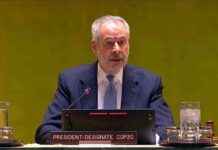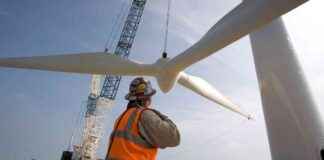President Donald Trump, in fulfillment of his campaign promises, has initiated the process of reducing the Environmental Protection Agency (EPA). The impact of these policies on the environment has been a cause for concern among current and former EPA employees as well as environmental advocates.
**The Start of Changes**
On January 28, shortly after being sworn in for his second term, President Trump’s administration sent out emails to around 2 million federal government employees, offering them the choice to either accept a resignation “deal” or face potential layoffs. Following this, on February 1, over 1,100 EPA workers were notified of the administration’s ability to terminate them immediately, raising tensions among employees who were in the early stages of their careers at the agency.
**Concerns and Criticisms**
The move to close the Office of Environmental Justice and External Civil Rights and place 168 employees on administrative leave further fueled discontent among the EPA workforce. Staff members, speaking anonymously due to fears of repercussions, pointed fingers at the new EPA administrator, Lee Zeldin, and the director of the Department of Government Efficiency, Elon Musk, for these drastic actions.
**Expert Insights and Concerns**
Margot Brown, the senior vice president of environmental justice and equity at the Environmental Defense Fund, criticized the administration’s actions as irresponsible and inefficient, highlighting the lack of a clear plan to protect air and water quality. Steve Gilrein, a former EPA employee, echoed these sentiments, describing the agency’s moves as a publicity stunt that lacked a strategic approach to maintaining a functional EPA.
**Historical Context and Decline**
The EPA has a long history of fluctuating staff numbers, with peak employment in the 1990s followed by a steady decline over the years. Various administrations, including those of President Obama and President Trump, have seen significant shifts in EPA staffing levels due to changing federal policies and priorities, as well as the increasing delegation of enforcement responsibilities to individual states.
**Federalism and State Involvement**
The concept of federalism, which delegates certain environmental regulatory functions to individual states, has impacted the EPA’s operational capacity and efficiency. While state agencies play a crucial role in environmental protection, federal oversight and expertise provided by EPA staff are vital in ensuring comprehensive compliance and enforcement of environmental laws.
**The Future of the EPA**
The recent actions taken by the Trump administration against the EPA raise concerns about the agency’s ability to fulfill its legal obligations and protect public health and the environment effectively. Closing offices and reducing staff numbers may have far-reaching consequences, impacting critical programs such as environmental justice initiatives and community funding for climate-related challenges.
**Final Thoughts**
As debates continue around the role and responsibilities of the EPA, it becomes evident that the agency’s work, often unseen by the public, plays a vital role in safeguarding human health and environmental quality. The ongoing changes and challenges faced by the EPA underscore the importance of maintaining a balanced approach to environmental governance that prioritizes science-based decision-making and collaborative efforts between federal and state entities.














